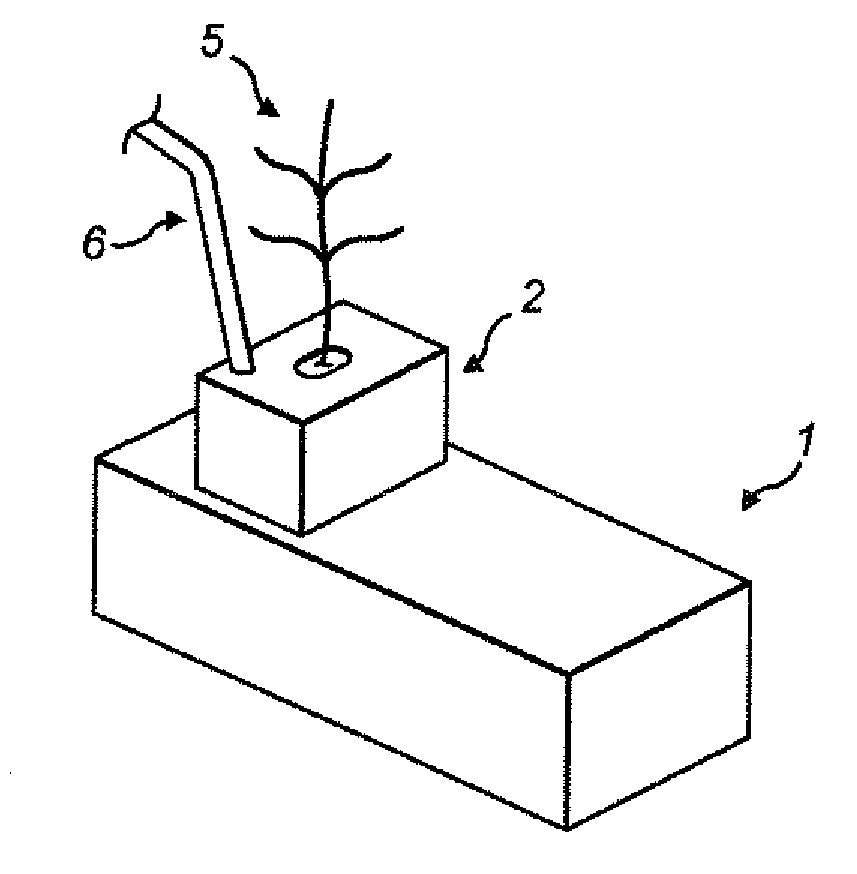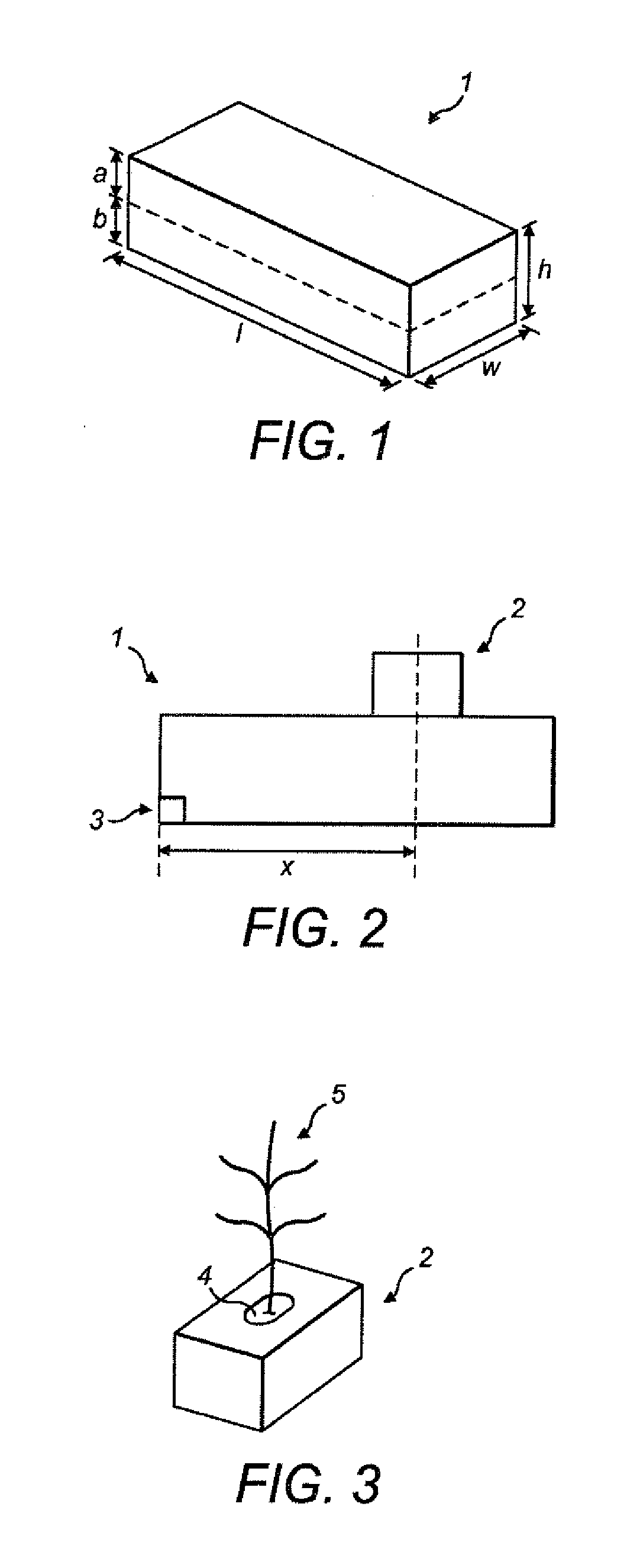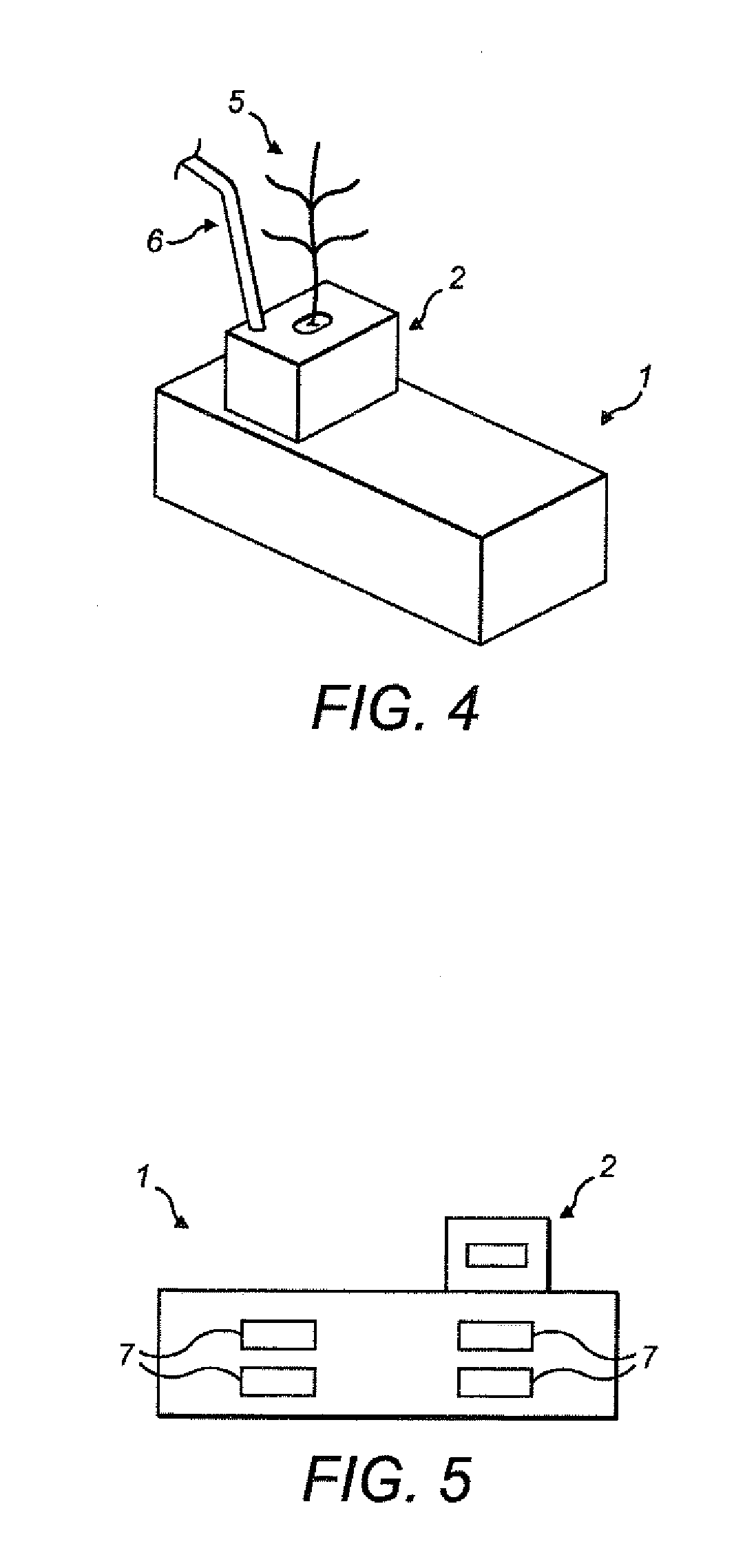Plant growth system
a plant growth and artificial substrate technology, applied in botany apparatus and processes, horticulture, agriculture, etc., can solve the problems of reducing the flow speed of plants, difficult to dispose of waste water containing such nutrients, and high cost of nutrient acquisition, so as to reduce the flow speed
- Summary
- Abstract
- Description
- Claims
- Application Information
AI Technical Summary
Benefits of technology
Problems solved by technology
Method used
Image
Examples
Embodiment Construction
[0075]Referring to FIG. 1, there is shown a mineral wool slab 1 having a first layer of a first density disposed above a second layer of a second density. The slab 1 has a volume of 6.8 litres, although more generally the volume may be in the range of 3 litres to 20 litres, more preferably in the range 5 litres to 15 litres, and most preferably in the range 5 to 11 litres. Some embodiments comprise a slab with a volume in the range 6 litres to 8 litres. In other embodiments, the volume may lie in the range of 3 litres to 15 litres, or 3 litres to 10 litres, for example. An alternative preferred embodiment comprises a slab having a volume of 9 litres.
[0076]The height h of the slab 1 of FIG. 1 is 100 mm, although more generally it may lie between 75 mm to 150 mm and more preferably between 85 mm and 125 mm. The width w of the slab 1 is 150 mm, although this may more generally lie in the range of 100 mm to 300 mm, for example. The length l of the slab 1 is 450 mm, although this value m...
PUM
 Login to View More
Login to View More Abstract
Description
Claims
Application Information
 Login to View More
Login to View More - R&D Engineer
- R&D Manager
- IP Professional
- Industry Leading Data Capabilities
- Powerful AI technology
- Patent DNA Extraction
Browse by: Latest US Patents, China's latest patents, Technical Efficacy Thesaurus, Application Domain, Technology Topic, Popular Technical Reports.
© 2024 PatSnap. All rights reserved.Legal|Privacy policy|Modern Slavery Act Transparency Statement|Sitemap|About US| Contact US: help@patsnap.com










